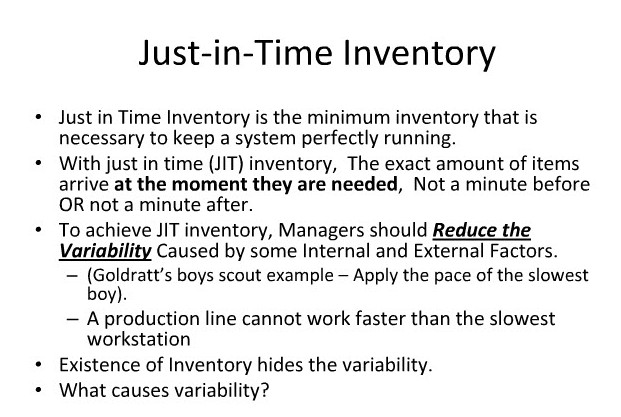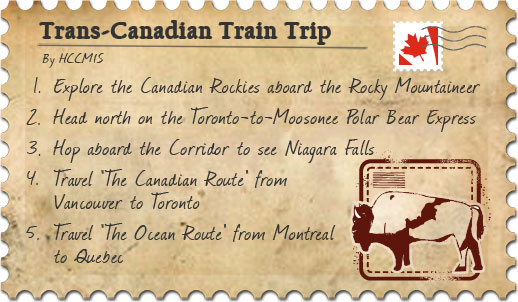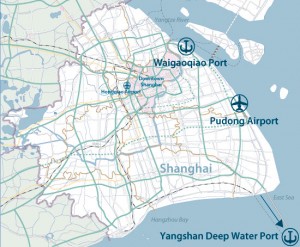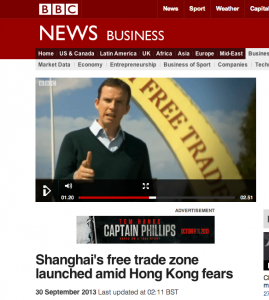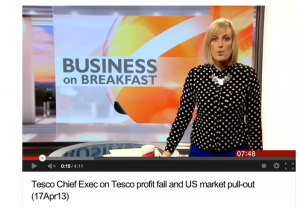Category Archives: Uncategorized
Making the most of your inventory
If we want to improve the business’ efficiency and save money, good inventory management practices can help you have the right stock at the right time, improving your bottom line.
The inventory is made up of all of the items you use to produce your product or service. For manufacturing businesses this includes raw materials, in-progress goods, and finished products. For retail and wholesale businesses, your inventory will contain the items you sell to customers.
Effectively managing the inventory can help you:
- Improve your cash flow
- Make purchasing decisions
- Recognize sales patterns
- Establish forecasts
- Set benchmarks
Carrying too little inventory could drive away customers. Conversely, keeping too much inventory on hand will cost you money. Implementing just-in-time inventory management practices may help your business achieve that important balance. Just-in-time suppliers deliver stock as it’s needed. However, successful implementation of just-in-time strategies requires accurate monitoring and prediction of customer demand.
A good inventory turnover ls a key factor in reducing costs and increasing profits. Offering special discounts and promotions can help you increase inventory turnover.keeping track of your inventory will help you identify best-selling items as well as unprofitable products
External Link: http://www.canadabusiness.ca/eng/blog/entry/3549/
Understanding Your Unique Selling Proposition
How to sell your services or products in a more efficient way? And how can a salesman close a deal by giving a deep impression of the product to consumers?
The key to effective selling in this situation is the “unique selling proposition” (USP) .Pinpointing your USP requires some hard soul-searching and creativity.This requires careful analysis of other companies’ ads and marketing messages.
How to discover your USP?
Put yourself in your customer’s shoes. Step back from your daily operations and carefully scrutinize what your customers really want.hat could make customers come back again and again and ignore your competition? The answer might be quality, convenience, reliability, friendliness, cleanliness, courtesy or customer service.
Know what motivates your customers’ behavior and buying decisions. Effective marketing requires you to be an amateur psychologist. You need to look at consumers’ motives for buying your products — taste, peer pressure, convenience and so on.
Uncover the real reasons customers buy your product instead of a competitor’s. As your business grows, you’ll be able to ask your best source of information: your customers.You will be surprised how honest people are when you ask how you can improve your service.
Successful business ownership is not about having a unique product or service; it’s about making your product stand out — even in a market filled with similar items.
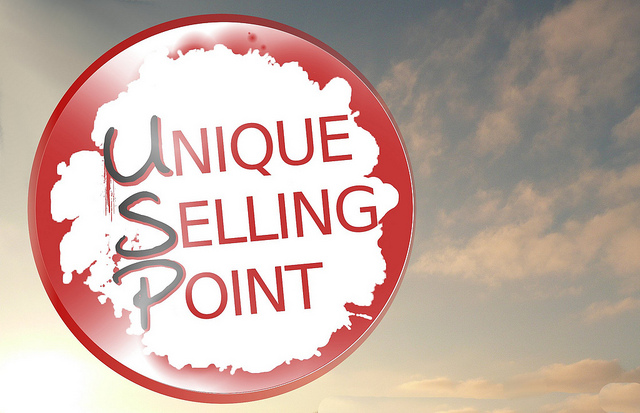
Reference: http://www.entrepreneur.com/article/225659#ixzz2klj2qLZu
Sell an experience, add value
How did Red Bull achieve its success? A vital element in tis success is the stories associated with the drink. Those exciting, appealing stories happened in the extreme-sports events draw costumers’ attention to the product itself. So, If you build in an experience to the sale of your product or service, your customers may spend more time and, therefore, more money on what you have to offer. A unique experience can add value and give you an advantage over your competitors.
When you offer your customers an experience, rather than a traditional transaction, you appeal to their emotions. The focus changes from the product to the customer. Think of what your brand represents. What emotions do you want your customers to experience when they use your product or service? How will you take them there? You can start by developing that feeling when you create an experience, and then carry through with something tangible.
Consider involving your clientele even more by providing options where they really have a chance to interact with your brand, such as:
- Product and service demonstrations
- Educational seminars or workshops
- Guided tours of your facility to show how your product is made
- Themed meals or tastings
- An immersive approach, such as agritourism
Make your brand memorable. Be the business where customers want to linger.
Reference: http://www.canadabusiness.ca/eng/blog/entry/4051/
How green is your supply chain?
How should we keep the supply chain GREEN? Sustainable supply chain management could improve the companies reputation and increase revenues in the long run. If you show them that your goods and services are delivered via a green supply chain to customers, they will trust the company more from an environmental-friendly perspective.
Collecting data from all the partners along your supply chain is costly, but can create the transparency that adds value to your business. Sharing this data with your customers allows them to make informed decisions.
The following questions should be asked to suppliers:
- What resources do you use?
- What is the impact on the climate?
- What chemicals do you use?
- What conditions do you provide for the workers?
If you can’t influence how your products are manufactured, perhaps you can change how they are transported or disposed of.
How can you make a difference?
- Buy local
- Avoid rush shipping and delivery
- Reduce excess inventory
- Green your packaging
Greening your supply chain may raise your standards as well as raising the bar for your competitors. This is a long-term commitment that requires a shift in thinking.
Reference: http://www.canadabusiness.ca/eng/blog/entry/4228/
Social Media & Social Enterprise
A social enterprise is an organization that applies commercial strategies to maximize improvements in human and environmental well-being, rather than maximising profits for external shareholders. For a social enterprise, social media can be the essential tool that builds the ties between the organization and the community.
Why should we use social media as an essential tool? Well, it can help to achieve some of your potential goals.
Making partnerships — Social media monitoring may help you find and reach out to new partners.
Identifying financial contributors — Easily available public information could help you seek donations.
Recruiting volunteers with the right skills — These platforms are an excellent source of active volunteers who are willingly part of the conversation.
Crowdsourcing new ideas or solutions — A call to action can be spread more quickly through social media than via traditional avenues.
Promoting your mission — Because you can post frequent details and updates, social media is a great low-cost marketing tool.
Reference: http://socialmediastrategiessummit.com/blog/3-tips-social-media-for-social-enterprises/
Canadian tourism declines despite world travel boom
Tourism is one of the world’s fastest-growing businesses, yet the number of international travellers to Canada has declined 20 per cent since 2000, according to a report from Deloitte & Touche.
The reasons behind are various. First, more people ( especially middle-class) prefer travelling to emerging economies such as China, Korea, Brazil and Mexico. Emerging economies are seeing the rise of middle-class people with enough income to travel. Secondly, the high Canadian dollar discourages large number of visitors from U.S. Thirdly, the high base fares in Canada’s air travel sector somehow blocks new demographic travellers.
In this case, I think Canadian government certainly should introduce structural reform in airy travelling sectors, to lower down the travelling cost. Meanwhile, more investment should be spent into travelling businesses, to retain good staff, improve their technology and enhance competitiveness. Moreover, provide good and characteristc tourism products that are appealing to tourists.
It’s clear that strengthening tourism would have a positive impact on Canadian companies and the overall economy. A boosting tourism acts as a means of boosting international trade, as travellers often become aware of business opportunities through meeting people face to face or acting on things they observe while on vacation. What’s more, an increase in travellers to Canada could encourage Canadian companies to enter new markets internationally and experience greater competitive intensity, which we know results in periods of high productivity growth positively impacting the economy.
External Link: http://www.cbc.ca/news/business/canadian-tourism-declines-despite-world-travel-boom-1.2426675
Identify consumer personas
It is vital for a business that intents to be successful to be clear about their targeted consumers. It is possible to please very consumer, but identifying the personas of the most important people to the business is going to shape business model and its strategies.
By viewing analytics and sales reporters, we can get an insight into our consumer base and thus create personas. Pick a handful that can represent the majority of our consumer. Look at personal information about customer base e.g. single no kids, Parents, Retired. Also look at product and service base and interaction levels with the business e.g. casual user, frequent buyer, enthusiast. Then name each personas based on their traits.
The central point after creating personas is to keep them being logged and tracked. This can be done by observing how consumer assigned into one persona react and respond to the changes in the good and services. Test and review communications to these personas. E.g. direct mail, mobile text, email etc. Look at the response rates/sales and be conscious of the timings to avoid individual customers suffering communication fatigue. Also use personas in any usability testing to ensure that the business is not alienating the majority of customer base through changes.
Incorporating Buyer Personas Into Marketing Strategy (video)
Reference:
http://www.smartercommerceblog.com/articles/2013/10/03/have-you-identified-your-customer-personas/
Shanghai free-trade zone launched
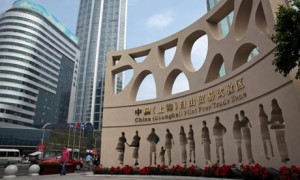 The launch of Shanghai free-trade zone is major step for financial reforms and economic experimentation. It has been seen as the most important attempt after Deng Xiaopin designated Shenzhen on the border with Hong Kong a special economic zone in 1980. The zone is expected to be s a testing area for such financial experiments before they are introduced elsewhere in China.
The launch of Shanghai free-trade zone is major step for financial reforms and economic experimentation. It has been seen as the most important attempt after Deng Xiaopin designated Shenzhen on the border with Hong Kong a special economic zone in 1980. The zone is expected to be s a testing area for such financial experiments before they are introduced elsewhere in China.
The detailed outline of how the zone will operate will be published until later this year. But the main features of the zone has been reported. The restriction for foreign investment will be eased, including shipping, law and engineering. Foreign-owned performing arts agencies and medical institutions will be allowed. The control of interest rate will be loosened, and more by the market forces, thus to encourage the investment. And heavily-regulated currency, the yuan, will be swapped freely for other currencies.
By opening the new test zone in Shanghai, a city of 20 million and one of the country’s major financial centers, Chinese government is planing to open up its financial system and internationalize its currency. Intense foreign investment will flow into free-trade zone next few years without restricted control, and therefore potential profits will be huge to obtain. And this experiment transformation shows that China is moving to conform to new trends in the global economy and trade.
BBC NEWS VIDEO: http://www.bbc.co.uk/news/business-24326880
References:
http://www.theguardian.com/world/2013/sep/29/china-shanghai-free-trade-zone
Competitive retail environment for Tesco
Teso is the UK’s biggest supermarket chain, and the second-largest retailer in the world measured by profits (after Wal-Mart). Recently, Tesco said profits fell 67% in Europe to £55m, while Asian profits, excluding China, dropped 7.4% to £314m.
From a overall viewing, the main reasons for this drop come from two aspects: rival competitors and consumers. Although right now Tesco is holds a lagger market share than its rivals in Asia, the total market share has fell from 30.9% to 20.2%, where as rivals like Sainsbury increased its market share from 0.2% to 16,6%. The battle becomes tougher with discount discount supermarkets such as Aldi and Lidl, besides existing competitor. Also, due to little improvement in consumers’ spending power in UK, there is less pessimism around. As the UK is still recovering from the economic recession, people’s real disposable income hasn’t increased much.
Under this situation, The UK firm decided to combine its Tesco China business, with the 2,986 stores held by CRE’s (China Resources Enterprise Vanguard) business. It is the third-largest supermarket chain in Hong Kong. It operates approximately 450 stores in Hong Kong and the Chinese municipalities.This strategy hopefully would help to pull up Tesco’s overall market share by utilizing Chinese people’s improving purchasing power, and the net profits might cover the continuous loss in tough European market to some extent.
Video Link: https://www.youtube.com/watch?v=zKrZBW2RRXA
Reference:
http://www.bbc.co.uk/news/business-24361465
http://www.bbc.co.uk/news/business-24374863
http://en.wikipedia.org/wiki/Tesco





